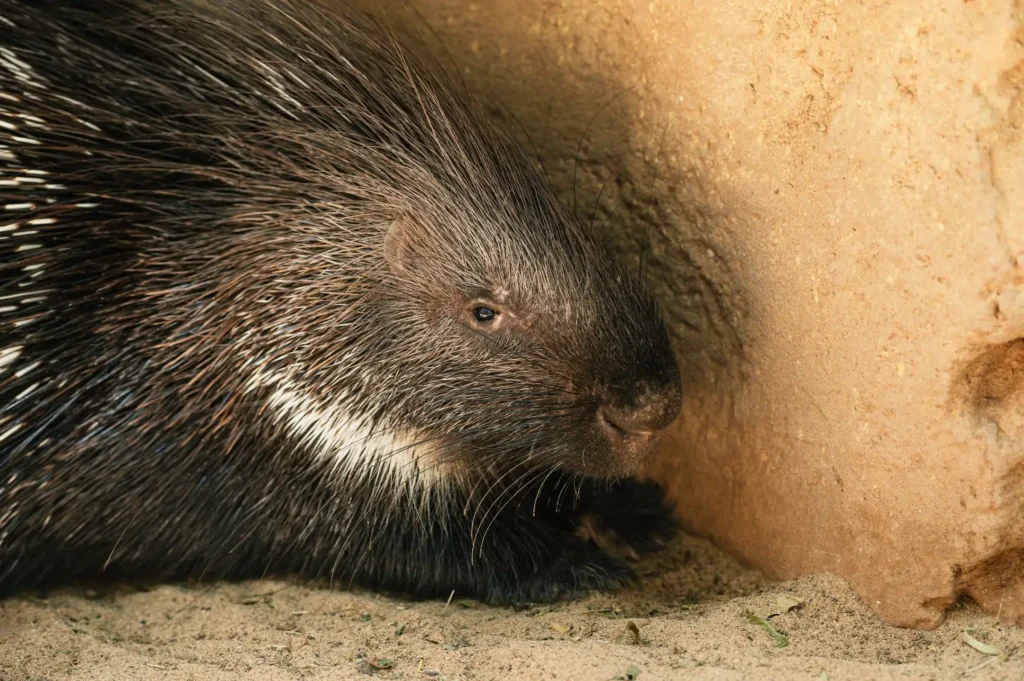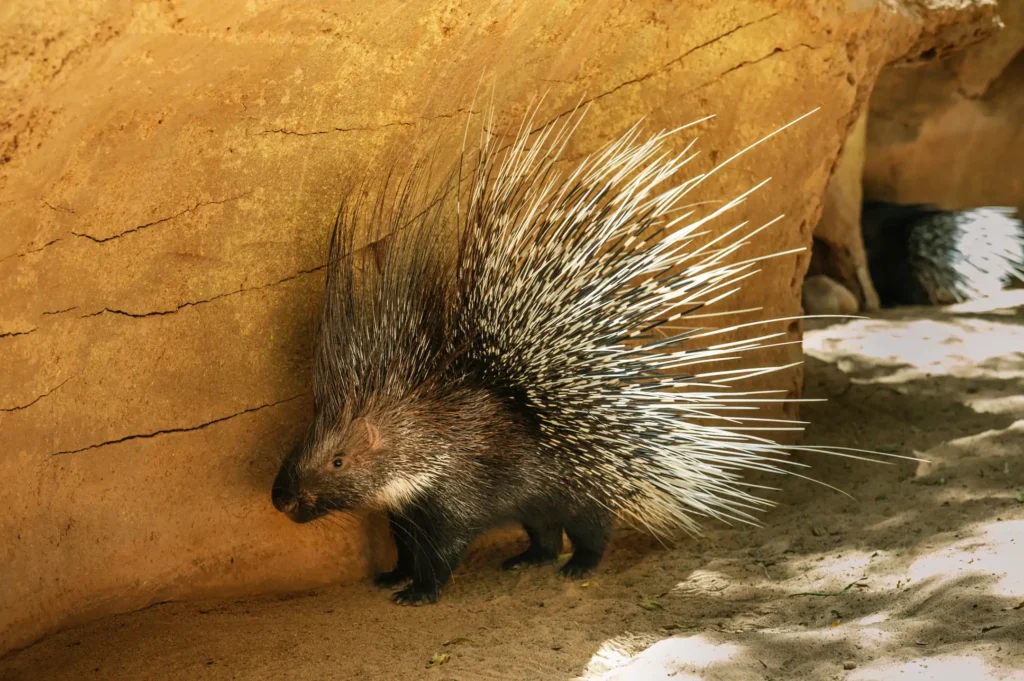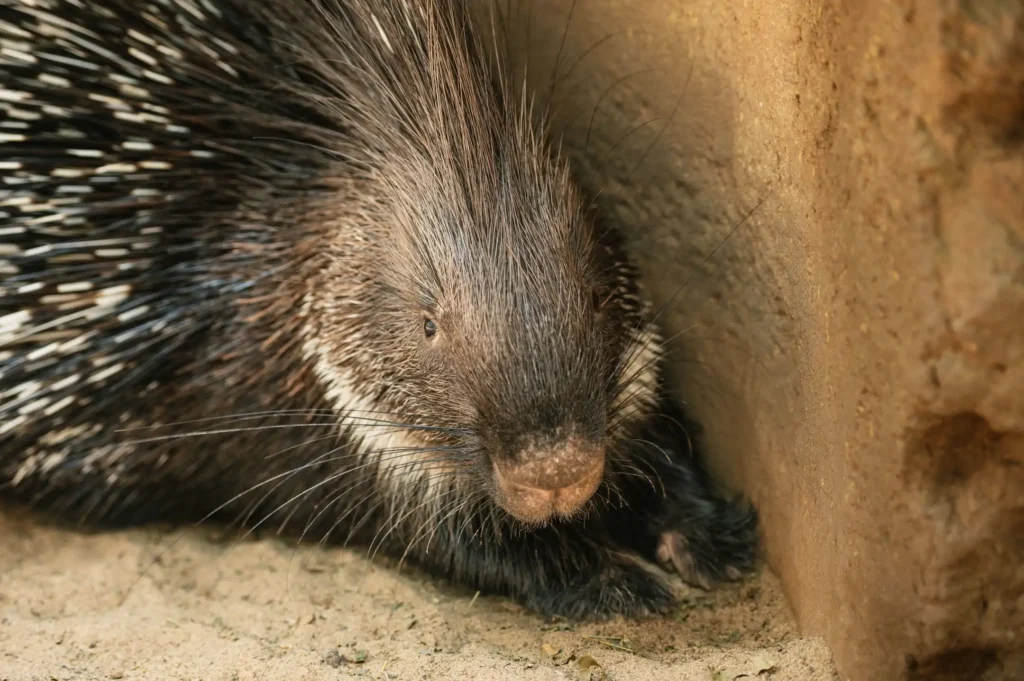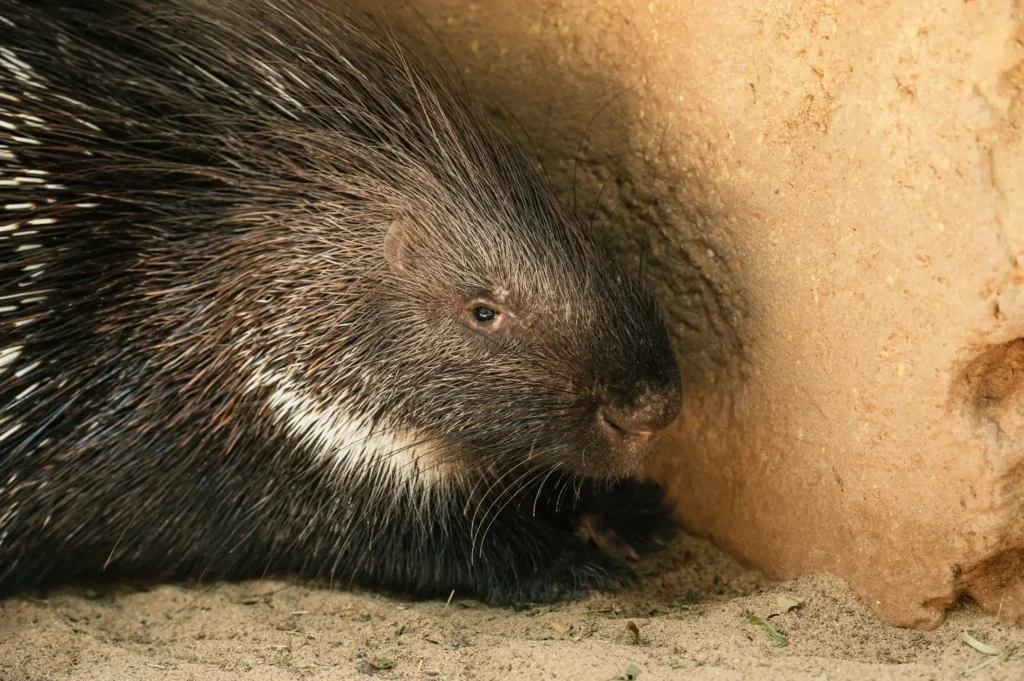The genus Hystrix currently includes eight species, of which six of them are from Asia and two from Africa. The distribution of Hystrix cristata also reaches several countries of Southern Europe.
Physical features
It is a very large plantigrade rodent, with a body length of 60 to 93 cm and a tail length of 8 to 17 cm. It can weigh between 10 and 20 kg. It is recognized by its long black and white quills covering its back, sides and tail. Its back and hindquarters have long quills (30-40 cm in length), located among other shorter and thicker black and white quills. It also has long, thin and flexible quills all of them usually of white colour. When in danger, it rises its quills and rattles the hollow spines on its tail at the same time, to warn off potential predators. Their front legs have four fingers with strong claws, while their back legs have 5 fingers. They have poor eyesight and hearing and their eyes and ears are small, while their sense of smell is the most developed of their senses. Females have 2 or 3 pairs of lateral thoracic mammae.
Habitat
Warm regions of Africa and, in Europe, south-central Italy. This species is distributed from the west of Africa, in the Congo river, up to the coasts of the Mediterranean Sea, through Morocco, north of Algeria, Tunisia and Libya. In Europe, this species lives in Italy, Albania, north of Greece and also on the island of Sicilia. Some individuals of this species have been spotted in Ceuta and Melilla. The porcupine is a very adaptable animal which can be found in a great variety of habitats and elevations from the sea level to 3500 m. They can live in areas with a high rate of shrub cover, near stream beds which have some water all year round. They also live in dry lands with brush and weeds, particularly on hillsides. They take shelter in caves, rocky clefts, burrows made by other animals or by themselves. These burrows are often large, with several entrances and sometimes they are used for years.
Feeding
It feeds on the green parts of plants, roots, tubers, other agricultural plants and occasionally meat foods. These herbivorous rodents mainly consume bark, roots, tubers, rhizomes, bulbs, fallen fruits and cultivated crops, occasionally complementing their diet with insects, small vertebrates and carrion. Porcupines are also known to gnaw on bones for calcium as well as in order to sharpen their incisors. They can go very long distances in search of food.
Breeding
Their estrous cycle is about 35 days. Female porcupine usually breeds once a year, although it sometimes gives birth to two litters in one year. By the time the female become receptive, it starts its sexual activity by approaching the male with its tail and rump up, moving its quills aside. The gestation period lasts between seven or eight weeks, yielding from 1 to 4 babies (average 1-2). Porcupettes are born with their eyes open and soft quills so they don’t harm their mother. However, these soon harden as they grow and in approx. 10 days they acquire their final strength. When they are only just a few weeks old they start leaving their burrow. Young are fully weaned at 50-60 days of age. These animals become sexually mature when they are 1-2 years old.
Behaviour
The porcupine does not usually disturb any animal, but when in danger, it bristles its quills and shakes its tail sounding simultaneously, which makes them look bigger. Contrary to popular belief, porcupines are unable to throw its quills defensively.
They don’t usually climb trees but they have been spotted sometimes up a tree. They are very good swimmers.
Porcupines are nocturnal and terrestrial creatures and have a plantigrade gait. They may travel up to 15 km looking for food. They are monogamous and take intensive care of their young, establishing family groups living in elaborate burrow systems. Porcupines may remain in burrows through winter but they don’t truly hibernate like other mammals.
In some areas of Africa, porcupines are poached as food and they are considered as a crop pest and killed for such reason. Apart from humans, enemies of this species are: lions, leopards, large birds of prey and hyenas.
Status and conservation
Ranked as Low Concern (LC) in the UICN Red List.
We have not many details on populations in Africa but estimates indicate they have suffered a population drop. However, in Europe, their population has progressively increased.





